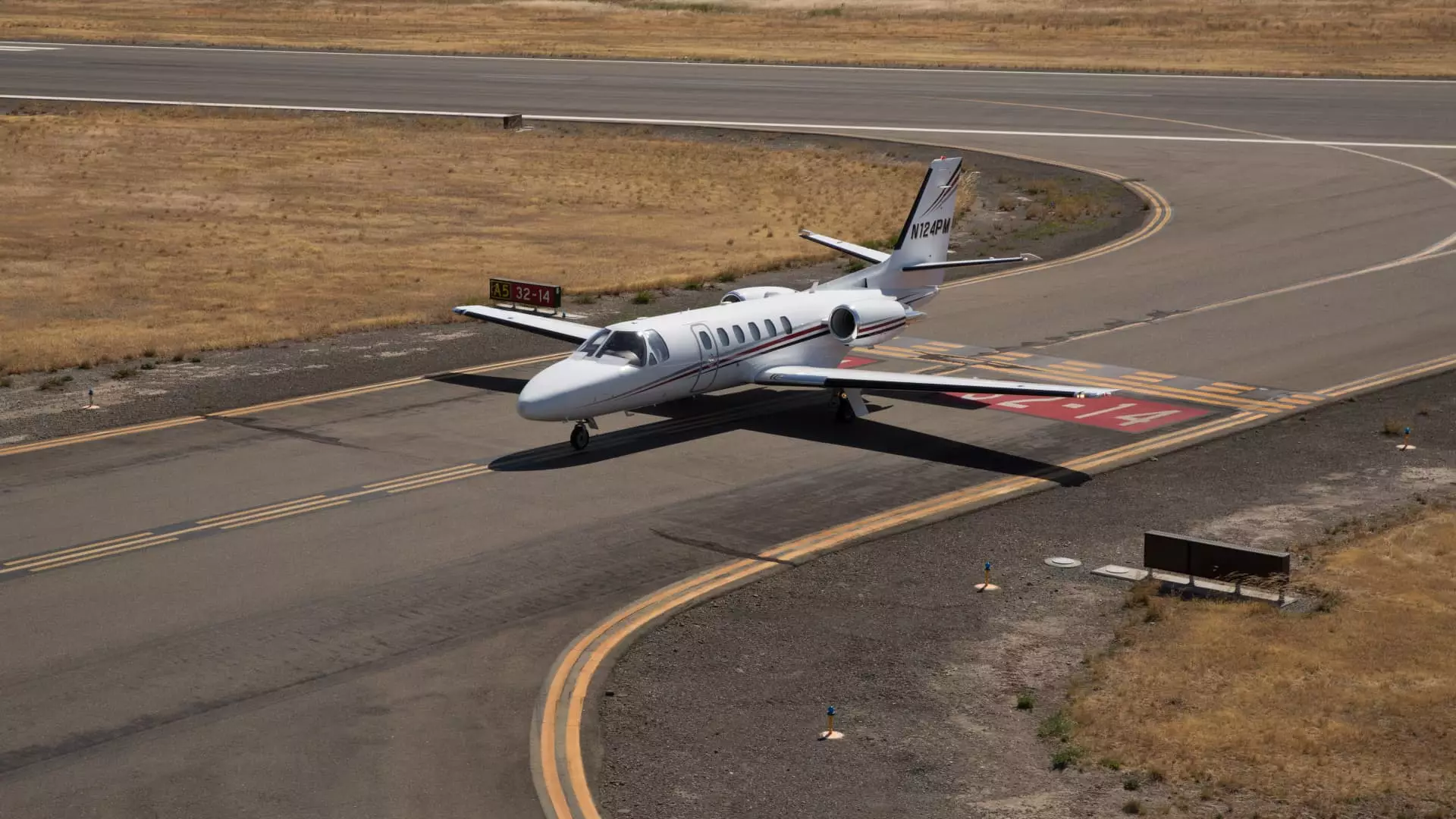The realm of commercial air travel is currently embroiled in an unsettling conundrum, signaling a grim reality for those who study market trends in aviation. According to a recent survey by Barclays, demand for business jets has plummeted a staggering 49% since March. This seismic shift has left industry stakeholders pondering the robustness of consumer confidence, which appears to be teetering precariously on the edge of a cliff. The survey, which engaged a group of 65 business jet brokers and financiers, not only highlights a steep decline in sales but also unveils a broader malaise affecting affluent consumers, a demographic that traditionally remains resilient even during economic downturns.
The emotional weight of the current situation cannot be understated. This decline isn’t just about numbers; it’s about perception, which now seems to dictate decision-making far more than ever before. According to Barclays’ Business Jet Indicator survey, customers are not merely delaying purchases—they are retreating into the shadows of uncertainty. The composite score reflecting market confidence has taken a nosedive from 52 to 40 in just a month, signaling a turbulent decline reminiscent of the chaotic days during the Covid pandemic.
The Tariff Tug-of-War: Impacts on Market Sentiment
Nearly 93% of survey respondents shared a palpable anxiety regarding the impending impact of tariffs—not just on new aircraft but also on their associated businesses. This overwhelming consensus highlights a critical strategy misalignment between government policy and market realities. When 46% of participants reported a downturn in customer interest, it’s indicative of a belief that new legislation could pose more risk than opportunity. It’s hard to ignore the intrinsic frustration felt by business leaders grappling with mercurial fiscal policies when the stakes are so high.
The concern seems justified, especially when one considers that a downward shift in consumer confidence is seldom a temporary blip. Instead, it’s a harbinger of deeper issues at play, often reflecting an economic landscape where consumers, regardless of their financial standing, choose to be more cautious. What’s alarming is that the attrition in demand occurs at a time when consumer spending should be primed for growth.
A Dismal Market Outlook: The Signs Are Alarming
Barclays’ survey reveals a stark reality that should send shivers down the spine of the aviation sector. For every business jet broker reporting diminished client interest—forty-four percent merely holding their ground while only ten percent claiming to see improvement—there lies an unmistakable sentiment echoing through their responses. The overall composite score of 40 points to a market that is in clear turmoil. A measurement so low implies that the dollar value of new orders is lagging feverishly behind fulfilled orders.
Investors and manufacturers should be extremely wary of such sobering statistics; the air travel industry has never been one to weather storms quietly. It can’t respond to a downturn by merely pushing inventory, as the inventory factors also reflect tightening supply lines. Should this trend continue, we may start to witness manufacturers struggling to balance their books—a precarious situation indeed for an industry that thrives on growth and innovation.
Potential Respite: Legislative Hopes in Play
Despite these turbulent clouds, a potential silver lining looms in the horizon. Recent bipartisan efforts in Congress aim to bolster business jet manufacturers through legislative adjustments concerning tax deductions. The Tax Cuts and Jobs Act (TCJA) is up for re-evaluation, and lawmakers are contemplating empowering businesses to fully deduct equipment purchases—decisions that can invigorate this ailing sector.
However, a cautious optimism is warranted. Legislation often takes time to trickle down, and the immediate effects may not set in until the broader fears of tariffs and economic uncertainty subside. Meanwhile, the aviation landscape could remain rocky, with sentiments oscillating based on policy shifts rather than an intrinsic belief in the market’s durability. As we chart the course ahead, acknowledging the interplay between government action and market sentiment could prove crucial for aviation’s recovery trajectory. The road may be uncertain, but the ongoing discourse and potential legislative moves may well define the future of business aviation.

